
Fundamentals
The phrase “Curl Patterns” refers to the inherent shape and configuration of individual hair strands as they emerge from the scalp. It is a fundamental descriptor, offering a clear explanation of how hair naturally bends, coils, or waves. This designation serves as a primary way to categorize the diverse spectrum of textured hair, moving beyond simplistic labels to recognize the unique architectural expression of each strand. For those new to the conversation surrounding textured hair, understanding these patterns is an initial step into a world rich with biological specificity and cultural meaning.

The Visual Language of Hair
Hair patterns are not merely a matter of aesthetic preference; they are a visual language, speaking volumes about a person’s biological heritage. From the broad, gentle undulations to the tight, spring-like formations, each variation tells a story of genetic inheritance and the ancestral journey of humanity. Recognizing these patterns allows for a more respectful and effective approach to hair care, moving away from universal, often Eurocentric, beauty standards towards practices that honor the hair’s natural inclinations.
The primary categories often used to describe Curl Patterns include waves, curls, and coils. Waves present as an ‘S’ shape, gently curving without forming a complete circle. Curls exhibit a more defined spiral, resembling a loose spring or corkscrew. Coils, often found in Afro-textured hair, are tight, compact spirals, sometimes forming a ‘Z’ shape, and possess a remarkable spring-like quality.
Curl Patterns offer a foundational understanding of hair’s inherent structure, guiding respectful care and acknowledging ancestral lineage.
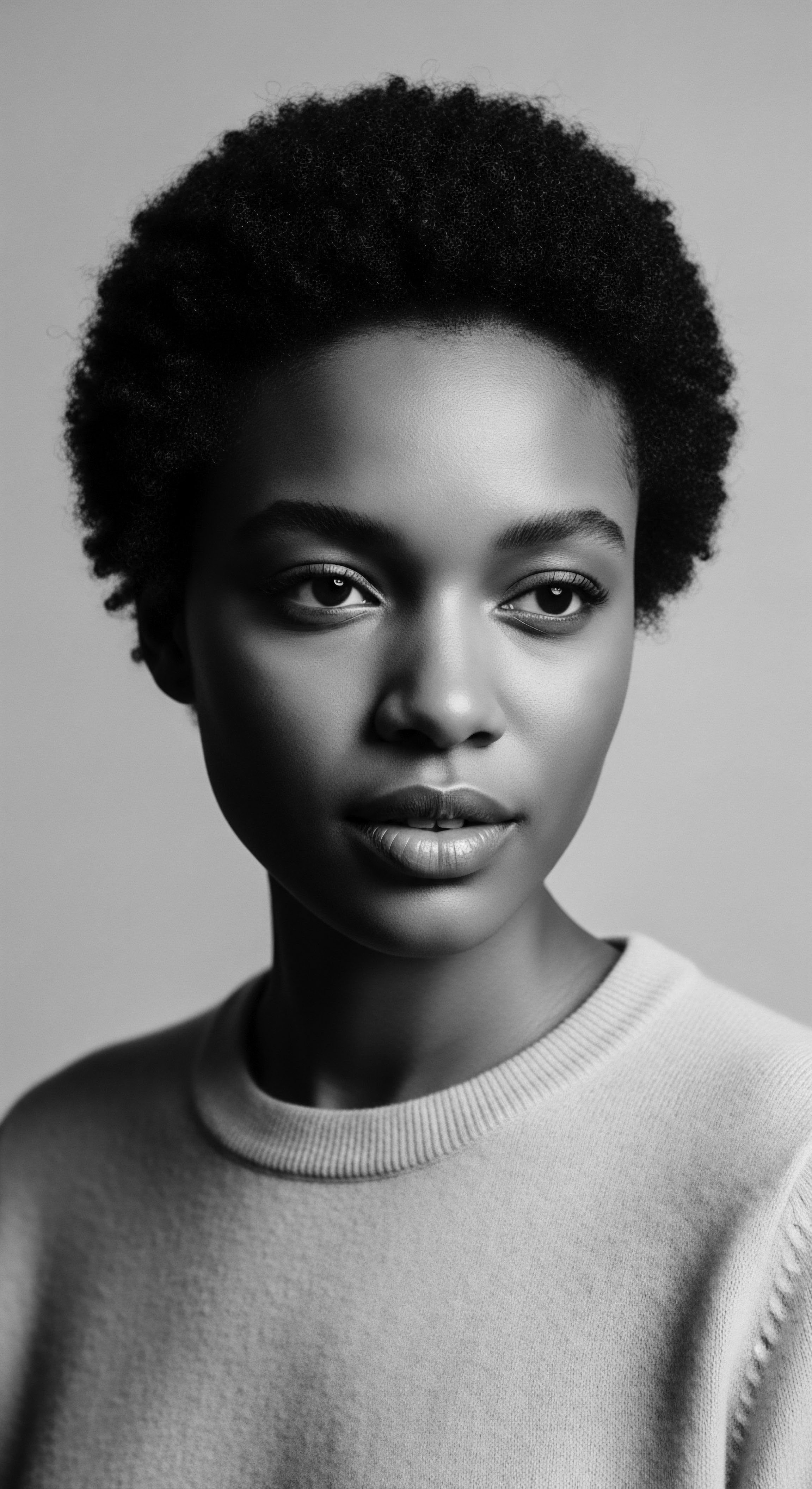
Early Recognition of Hair Formations
Long before modern scientific classifications, ancestral communities possessed an intuitive grasp of hair’s varied formations. They understood that hair was not uniform and that its distinct appearances required specific care and styling. This understanding was not codified in charts, but rather woven into daily rituals, communal grooming, and the transmission of intergenerational wisdom. The designation of different hair types was often tied to social roles, age, or tribal identity, underscoring hair’s communal and communicative value.
For instance, in ancient African societies, hairstyles served as intricate maps of social status, age, marital status, and even spiritual beliefs. The art of hair braiding, passed down through generations, held deep cultural meaning, with specific patterns identifying an individual’s tribe or ethnic group. This historical recognition of distinct hair formations, though not labeled “Curl Patterns” as we do today, laid the groundwork for appreciating the diverse beauty of textured hair.

Intermediate
Moving beyond the basic designation, an intermediate understanding of Curl Patterns acknowledges the complex interplay of biological factors and historical forces that shape hair’s physical manifestation and societal perception. The Curl Patterns are not simply visual classifications; they are expressions of genetic legacy, influencing how hair interacts with moisture, responds to manipulation, and holds its form. This deeper comprehension considers the hair shaft’s cross-sectional shape—elliptical for curlier strands, rounder for straight hair—and the curvature of the hair follicle itself, which dictates the curl’s tightness.
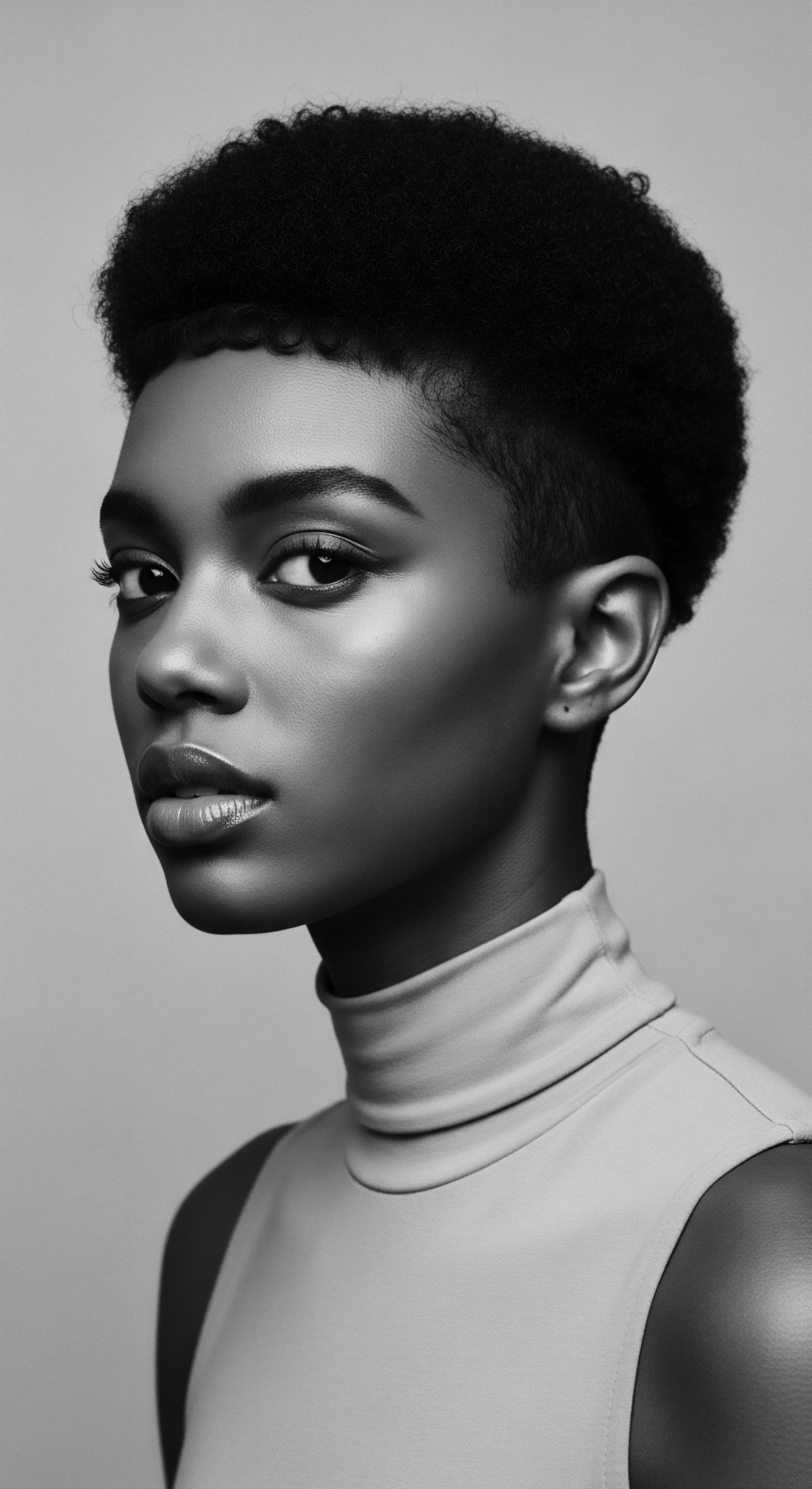
The Hair Follicle’s Ancestral Blueprint
The very architecture of the hair follicle, a tiny pocket within the scalp, serves as an ancestral blueprint for the Curl Patterns we observe. A more curved or asymmetrical follicle produces hair that coils tightly, while a straighter follicle yields hair with less curvature. This biological reality means that the spectrum of Curl Patterns, particularly those with tighter coils, is a direct inheritance, carrying the echoes of genetic adaptations. These adaptations may have served early human ancestors by protecting the scalp from intense ultraviolet radiation and allowing air circulation in hot climates.
This inherent biology, however, was often distorted and devalued through historical processes. The transatlantic slave trade, for instance, systematically aimed to erase the cultural significance of African hair. Enslaved Africans were often forced to shave their heads upon arrival in the Americas, a deliberate act designed to dehumanize and strip them of their identity and connection to their homeland. This forced erasure of hair, and by extension, its Curl Patterns, became a tool of oppression, marking a painful departure from ancestral reverence for hair.

Systems of Classification and Their Legacies
Modern hair typing systems, like the widely adopted Andre Walker Hair Typing System, categorize hair into numerical and alphabetical classifications (e.g. 2A, 3B, 4C). While intended to help individuals identify their hair and select suitable products, these systems carry a complex history.
Some of the earliest attempts at hair typing in the 20th century were rooted in racial categorization, seeking to determine an individual’s “proximity to whiteness” based on hair texture. Eugen Fischer, a German Nazi scientist, created a “hair gauge” in 1908 for this very purpose, and the Apartheid Pencil Test in South Africa served a similar function, denying white classification to those who could hold a pencil in their hair.
The evolution of these systems, from instruments of racial hierarchy to tools for consumer guidance, underscores the persistent societal impact on how Curl Patterns are perceived. Even today, texturism—discrimination based on hair texture, often favoring looser curls—remains a challenge within the textured hair community and wider society.
The Curl Patterns we observe today carry the indelible marks of both biological inheritance and historical oppression, making their understanding a reclamation of identity.
- Hair Follicle Shape ❉ The shape of the hair follicle dictates the degree of curl. A more elliptical or asymmetrical follicle produces tighter curls, while a rounder follicle results in straighter hair.
- Keratin Distribution ❉ The uneven distribution of keratin, the protein that makes up hair, within the hair shaft also contributes to curl formation. This asymmetry causes the hair to bend and twist.
- Disulphide Bonds ❉ The number and arrangement of disulphide bonds, strong chemical links within the hair protein, influence the hair’s curliness. Afro-textured hair often has a higher density of these bonds.
| Era/Context Pre-Colonial Africa |
| Traditional/Ancestral Perception Hair as a symbol of social status, age, marital status, spiritual connection, and tribal identity. |
| Colonial/Post-Colonial Influence Not applicable; a period of intrinsic cultural value. |
| Era/Context Transatlantic Slave Trade |
| Traditional/Ancestral Perception Hair as a tool of resistance, a means of communication (e.g. cornrows encoding escape routes or rice seeds for survival). |
| Colonial/Post-Colonial Influence Forced shaving of heads to dehumanize and strip identity; pathologizing of coiled hair as "ugly" or "inferior." |
| Era/Context Civil Rights Era (US) |
| Traditional/Ancestral Perception Afro hairstyle as a powerful symbol of Black pride, activism, and rejection of Eurocentric beauty norms. |
| Colonial/Post-Colonial Influence Continued discrimination against natural hair in professional and social settings, despite cultural reclamation. |
| Era/Context The enduring spirit of textured hair has persisted through centuries of changing perceptions, maintaining its deep connection to identity. |
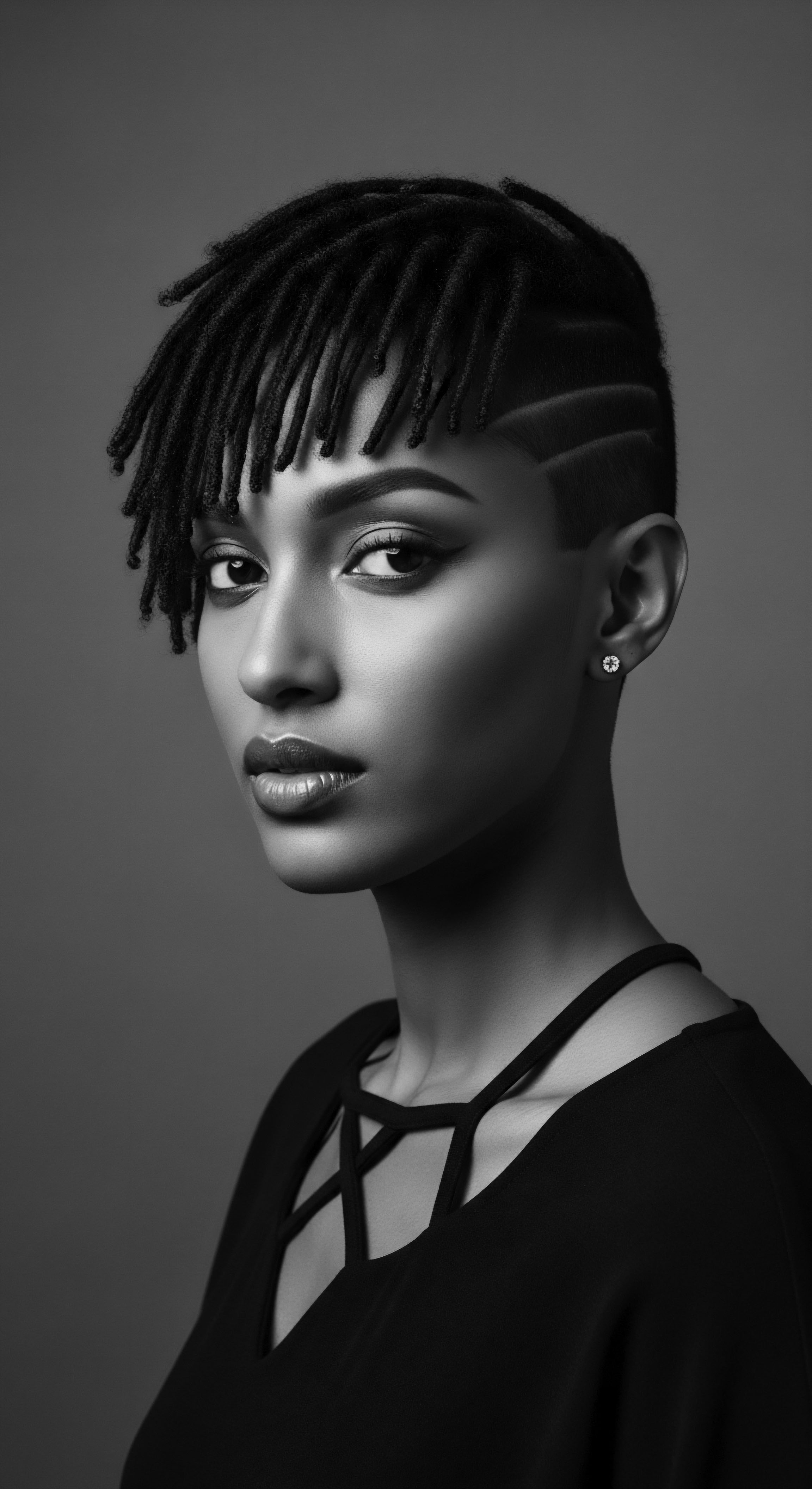
Academic
The Curl Patterns, from an academic perspective, represents a complex phenotypic expression of genetic and biological factors, inextricably linked to the socio-cultural histories of human populations, particularly those of African descent. Its scientific delineation extends beyond mere visual observation to encompass the microscopic morphology of the hair follicle, the molecular composition of the hair shaft, and the biophysical properties that dictate its behavior. This scientific understanding is not a sterile laboratory concept; it is a profound interpretation of hair’s physical characteristics, offering clarification on its diverse forms and a deeper elucidation of its structural uniqueness, especially within the context of textured hair heritage.

Biophysical Underpinnings of Curl Patterns
The formation of distinct Curl Patterns is primarily governed by the asymmetrical structure of the hair follicle. Unlike the straight hair follicle, which is largely cylindrical and emerges perpendicularly from the scalp, follicles producing coiled or curly hair exhibit a curved, often S-shaped, retro-curvature at the bulb. This curvature influences the distribution of keratinocytes, the cells that produce keratin, the primary protein of hair.
An uneven proliferation of these cells on either side of the curved follicle leads to an asymmetrical deposition of keratin within the hair shaft. This differential growth causes the hair to bend and twist as it emerges, creating the characteristic spiral.
Furthermore, the cross-sectional shape of the hair fiber itself varies significantly with Curl Patterns. Straight hair tends to have a round cross-section, while wavy hair is more oval, and tightly coiled or kinky hair is distinctly elliptical or flattened. The greater the ellipticity, the tighter the curl.
This structural variation affects the hair’s mechanical properties, making highly curved hair more susceptible to mechanical stress and breakage due to the numerous turns and twists along its length. This mechanical vulnerability necessitates specific care practices, many of which have been intuitively developed within textured hair communities over generations.
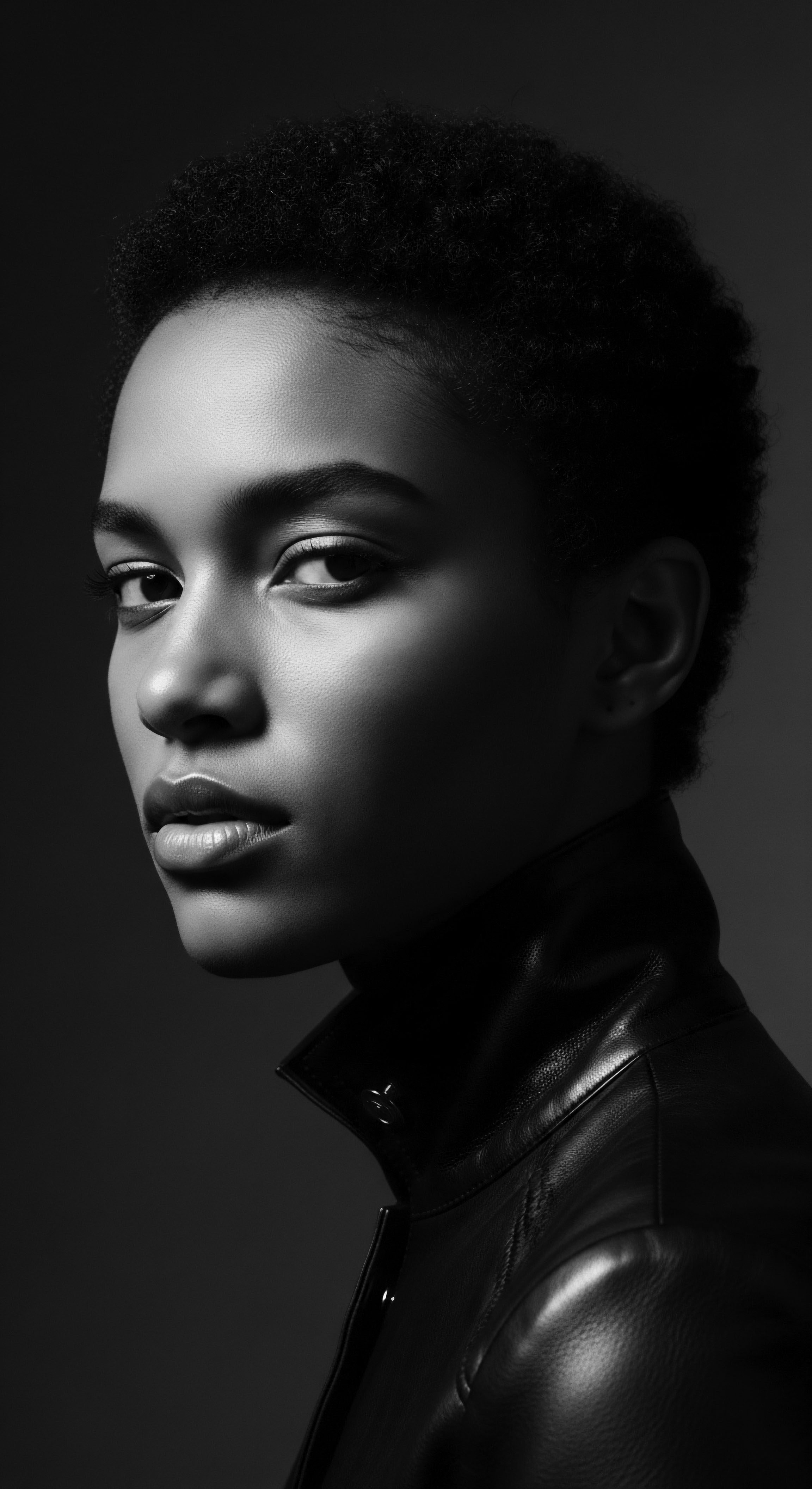
The Sociological and Anthropological Delineation of Hair
Beyond biology, the Curl Patterns carry immense sociological and anthropological weight, particularly within the Black diaspora. Hair has historically served as a potent marker of identity, social status, and cultural belonging across African societies. Prior to colonial intervention, the intricate styling of hair, often reflecting specific Curl Patterns, communicated an individual’s age, marital status, tribal affiliation, wealth, and even religious beliefs. This tradition was systematically disrupted by the transatlantic slave trade, where the forced shaving of heads and denial of traditional hair care tools aimed to strip enslaved Africans of their cultural heritage and identity.
The legacy of this historical violence continues to influence perceptions of Curl Patterns today, giving rise to “texturism”—a form of discrimination that favors looser curl patterns over tighter, more coiled ones. This prejudice often stems from Eurocentric beauty standards that pathologized Afro-textured hair as “nappy,” “kinky,” or “bad,” influencing self-perception and societal acceptance within and outside Black communities.
A powerful historical example of the Curl Patterns’s connection to textured hair heritage and ancestral practices as a form of resistance can be found in the ingenious use of cornrows during the transatlantic slave trade. Enslaved Africans, stripped of their language and material possessions, employed cornrows not merely as a practical style for arduous labor, but as a covert means of communication and survival. They braided rice seeds into their hair for sustenance upon escape, and the intricate patterns of cornrows were sometimes used to create maps of escape routes, indicating paths and locations for rendezvous.
This specific historical practice transforms the simple definition of a Curl Pattern into a profound statement of resilience, demonstrating how the very physical manifestation of textured hair became a tool for liberation and the preservation of ancestral knowledge. This act of braiding, often performed communally on Sundays, the sole day of rest, also served as a vital social ritual, reinforcing community bonds amidst brutal oppression.
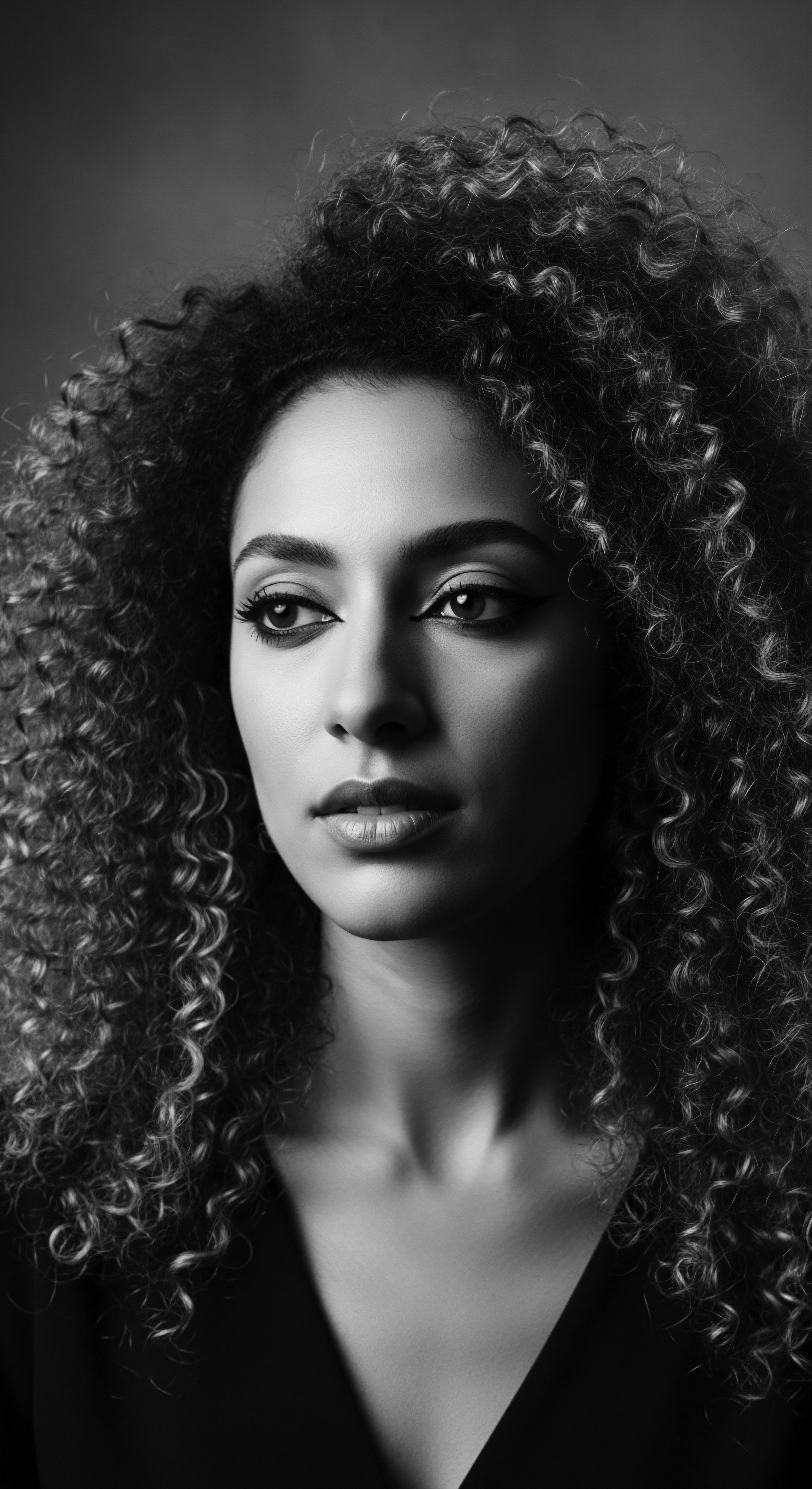
Genetic Contributions to Curl Patterns
The genetic underpinnings of Curl Patterns are a subject of ongoing scientific inquiry, with studies pointing to the involvement of multiple genes in determining hair shape. While the exact genes responsible for the unique coiling of Afro-textured hair are still being fully delineated, research indicates that the prevalence of highly curved follicles is a universal characteristic among individuals of African descent. A study in South Africa, for example, revealed strong links between specific genetic variations in genes like Trichohyalin, a copper transporter protein (CUTC), and Keratin 74 (KRT74), and the determination of curl patterns. This genomic specification offers a scientific corroboration for the inherited nature of Curl Patterns, grounding ancestral observations in biological fact.
The understanding of Curl Patterns thus becomes a critical lens through which to examine not only hair biology but also the complex interplay of genetics, cultural practices, and historical narratives. It is an intellectual pursuit that demands sensitivity to its social implications, moving beyond a purely scientific classification to acknowledge the deep heritage embedded within each coil and curve.
- Hair Follicle Asymmetry ❉ The primary determinant of curl, where the hair follicle grows in a curved or asymmetrical manner, leading to an uneven growth of keratinocytes.
- Hair Shaft Cross-Section ❉ The shape of the hair shaft, ranging from round (straight hair) to elliptical or flattened (coiled hair), directly correlates with the degree of curl.
- Differential Keratinization ❉ Uneven hardening of keratin on different sides of the hair shaft contributes to its helical growth.
- Genetic Predisposition ❉ Specific genes, such as KRT74, TCHH, and CUTC, have been identified as contributing to the genetic basis of hair curl patterns, particularly in African populations.
| System/Concept Early 20th Century Racial Classifications (e.g. Eugen Fischer's Hair Gauge, Apartheid Pencil Test) |
| Origin/Purpose To categorize hair based on perceived racial proximity to whiteness; used to support racist ideologies and social hierarchies. |
| Heritage-Related Impact Deeply damaging, leading to internalized beliefs of inferiority and discrimination against textured hair. |
| System/Concept Andre Walker Hair Typing System (1990s) |
| Origin/Purpose Developed to classify hair into types (1-4, A-C) for product marketing and consumer guidance. |
| Heritage-Related Impact While useful for product selection, it inadvertently contributed to "texturism" by creating a hierarchy of curl desirability. |
| System/Concept Contemporary Natural Hair Movement |
| Origin/Purpose Reclamation of natural textured hair, promoting self-acceptance, celebrating diverse Curl Patterns, and rejecting Eurocentric beauty norms. |
| Heritage-Related Impact A powerful counter-hegemonic movement, fostering pride and community, and advocating for policy changes against hair discrimination. |
| System/Concept The journey of hair classification reflects a broader societal struggle for recognition and validation of textured hair's inherent beauty. |
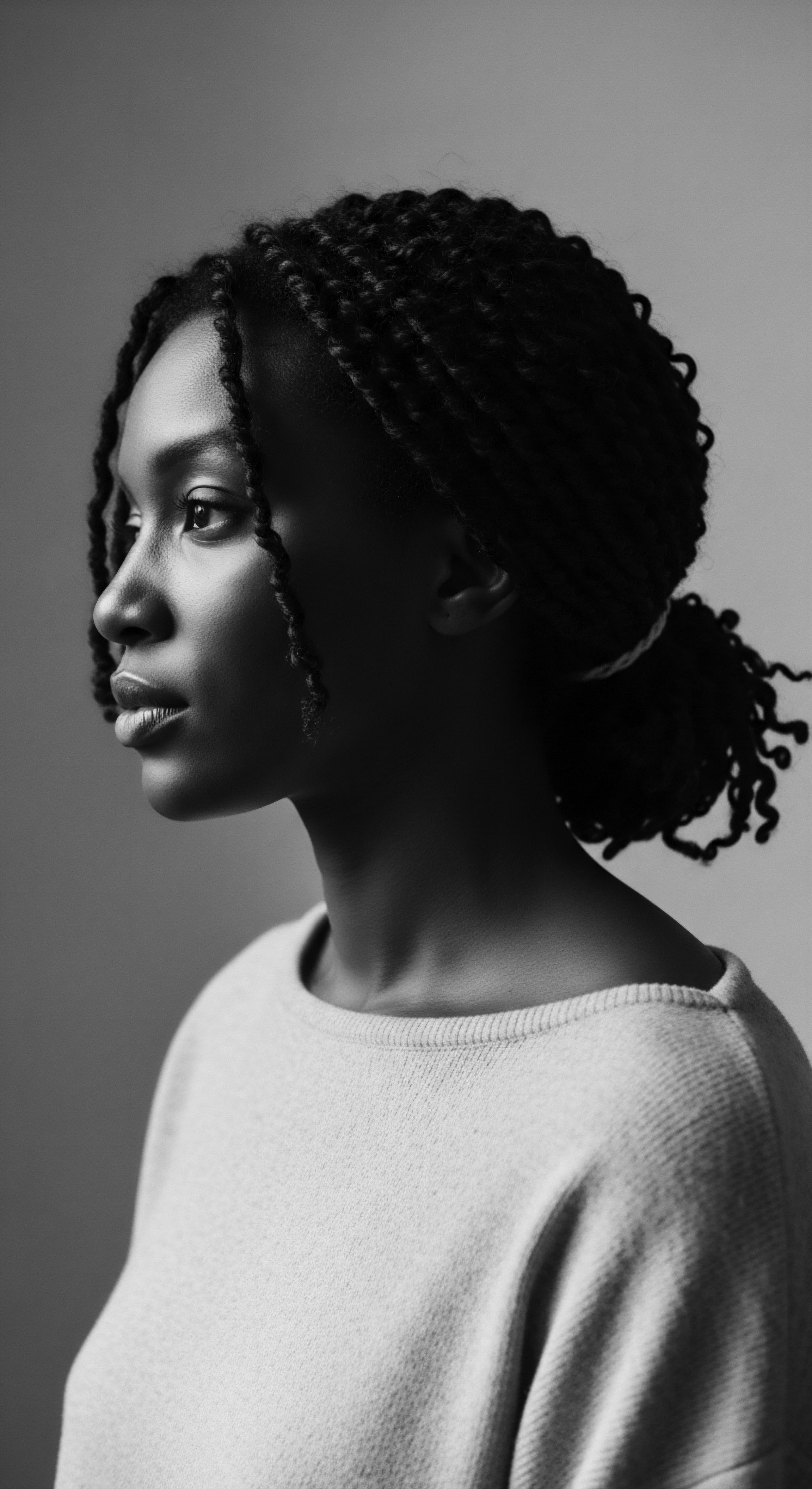
Reflection on the Heritage of Curl Patterns
The enduring legacy of Curl Patterns is a profound meditation on the resilience of textured hair and the communities it adorns. From the earliest whispers of ancestral wisdom, carried through the meticulous braiding traditions of ancient African civilizations, to the contemporary scientific inquiry into the helix’s very formation, the meaning of Curl Patterns has expanded. It is not merely a biological fact; it is a living archive, each strand a testament to survival, creativity, and the unwavering spirit of identity. The journey of understanding Curl Patterns is thus a sacred undertaking, connecting us to the hands that first braided, the spirits that found solace in communal grooming, and the ancestors who defied erasure through the very hair on their heads.
This deep heritage, woven into every coil and curve, reminds us that caring for our hair is an act of honoring history, a tender thread connecting past to present, and a bold declaration for the future. The soul of a strand truly speaks volumes.

References
- Afriklens. (2024). African Hairstyles ❉ Cultural Significance and Legacy.
- Banks, I. (2000). Hair Story ❉ Untangling the Roots of Black Hair in America. St. Martin’s Press.
- Byrd, A. D. & Tharps, L. D. (2001). Hair Story ❉ Untangling the Roots of Black Hair in America. St. Martin’s Press.
- Johnson, D. & Bankhead, T. (2014). Black Hair and Hair Texture ❉ Cultivating Diversity and Inclusion for Black Women in Higher Education. Emerald Publishing Limited.
- Leach, E. R. (1958). Magical Hair. Journal of the Royal Anthropological Institute of Great Britain and Ireland, 88(2), 147-164.
- Lindelöf, B. Forslind, B. & Hedin, P. (1988). Structural variations in human hair follicles related to hair form. Journal of Investigative Dermatology, 90(5), 741-744.
- Mbodj, M. (2020). The significance of hair in African culture. Okan Africa Blog.
- Robbins, C. R. (2012). Chemical and Physical Behavior of Human Hair (5th ed.). Springer.
- Rosado, S. D. (2007). Nappy Hair in the Diaspora ❉ Exploring the Cultural Politics of Hair Among Women of African Descent (Doctoral dissertation). University of Florida.
- Thompson, A. (2009). Black Women and Identity ❉ A Sociological Analysis of Hair and Self-Esteem. Palgrave Macmillan.
